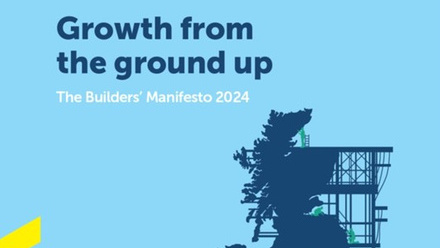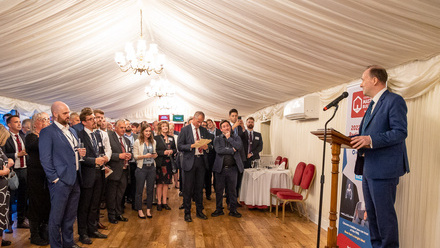Builders can now install certain energy efficiency products in homes and charge 0% VAT to customers, thanks to an announcement made by the Government at the Spring Statement in March. The scheme began on 1 April 2022 and was updated in May 2023 The scheme is scheduled to end on 1 April 2027.
The information below covers the scheme in the Great Britain. For those working in Northern Ireland the list of qualifying goods and rate of VAT due on installations will remain unchanged.
What jobs are covered?
- Residential properties and the area within their curtilage.
- Charitable buildings were added in February 2024
Energy efficiency installations in business premises are not included at present.
What products are covered?
The following products are covered under this scheme:
- Controls for central heating and hot water systems
- Draught stripping
- Insulation, including roofs, walls, ceilings, and floors, as well as water tanks, pipes and other plumbing
- Solar panels
- Ground source heat pumps
- Air source heat pumps
- Micro combined heat and power units
- Boilers fuelled by wood, straw or similar vegetal matter
- Wind turbines
- Water turbines
- Water source heat pumps
- Battery storage systems
- Smart diverters
What process is covered?
The 0% VAT applies to the supply and installation of the energy efficiency products listed above. For exact details on each product read the information on Energy-saving materials and heating equipment (VAT Notice 708/6) on the GOV.UK website before committing to a job. To qualify for the zero rate, you must provide installation of the product.
For example:
- If the builder supplies and installs the product, 0% VAT applies to both supply and installation.
- If the client supplied the product and the builder installs it, 0% VAT applies to installation only.
- If the client buys the product from a merchant and installs the product themselves, they cannot claim 0% VAT.
Work at the 0% rate also covers some extras. If work is done in aid of energy efficiency materials being installed, such as having a new loft hatch fitted to reach the roof, or new radiators installed with a heat pump, this is also covered.
The installation of these products at 0% VAT is covered up until 31 March 2027, after which it will revert to a reduced rate of 5% VAT.
What’s covered and whats not?
Single supply
The primary bulk of the work must be centred around the installation of the listed products. This is where confusion can arise, as many builders will include energy efficiency measures as part of a larger job.
HMRC can view this as a single supply of goods and services charged at the usual rate of VAT. For example, if a client has insulation fitted and a completely new roof put on, then it’s the usual rate of tax as its one job and considered a single supply under HMRC rules. Building an extension with energy efficiency materials would also not be zero rated, as the installation of the products is not the sole purpose of the work.
As a general rule of thumb, if a non-energy efficiency job (even if this includes installation of the products listed above) has one price, or a clearly interconnected product supply and one contract, then this is a single supply and therefore not eligible for 0% VAT,
Mixed supply
However, if you were to build an extension and return to it after a period of time to supply energy efficiency products at the request of the homeowner, this would be acceptable as a mixed supply job, providing it was evidenced. Using the extension scenario as an example, you could prove this by:
- providing separate invoicing to the original job;
- ensuring the items supplied for initial job are distinct from the energy efficiency job;
- showing that there is a clear time difference between the non-energy efficiency work and the energy efficiency work; and
- demonstrating that the supply of goods for the energy efficiency work are not dependent on the extension work.
Broadly, in the case of mixed supply, it will be easiest to offer 0% VAT to the consumer if the work is clearly separated from a larger project via different contracts and takes place at a separate time, with materials not being used on the larger project.
It's important to seek guidance as the circumstances of each project will differ and there’s no ‘one size fits all’ answer. If you are a contractor or subcontractor installing energy-saving materials, you should read HMRC’s guidance on energy-saving materials and heating equipment (VAT Notice 708/6) paragraph 2.5 for further information.
Why is 0% VAT important?
We know that VAT costs put off roughly 4 million households a year from improving their homes. Installing energy efficiency measures isn’t cheap, but with 0% VAT, customers will be able to make substantial savings. We also know that when VAT is reduced to just 5% on RMI labour it will create around 345,000 jobs. While the scheme isn’t that extensive, it has the ability to create more work for members.
What will this scheme do?
This should mean that some customers take up more work as a result, especially if they were on the fence about having work done. This is because they could make substantial savings, especially on larger projects. It would be worth noting this discount if you have any enquiries about this sort of work. But remember, it must be related to the installation of the energy efficiency products and directly related work, a discount can’t be applied as part of a larger job.
What’s the FMB been doing?
The Federation of Master Builders has campaigned extensively to lower the rate of VAT to boost the workloads of builders, and as part of wider plans to improve energy inefficient homes, through a National Retrofit Strategy. While the VAT cut is a step in the right direction, we would have liked to have seen the Government commit to more extensive plans, especially introducing a reduced rate on VAT on all RMI work.
While this is a welcome step forward, more needs to be done to properly instigate a retrofit revolution. This will be vital for the country to hit net zero targets and help drop energy bills, something especially important during the ongoing cost of living crises.
At the FMB, we’ll continue to push for a fully-fledged National Retrofit Strategy and will strive to bolster the market through the introduction of reduced VAT on all RMI work. You can follow our work on our campaign pages.
Further information
Full details of this scheme can be found on the GOV.UK website.
If you need help with this scheme you contact the GOV.UK VAT helpline.
Contact the FMB with any queries at [email protected]






